How every 2023 NHL Draft prospect performed at the Under-18 World Championship
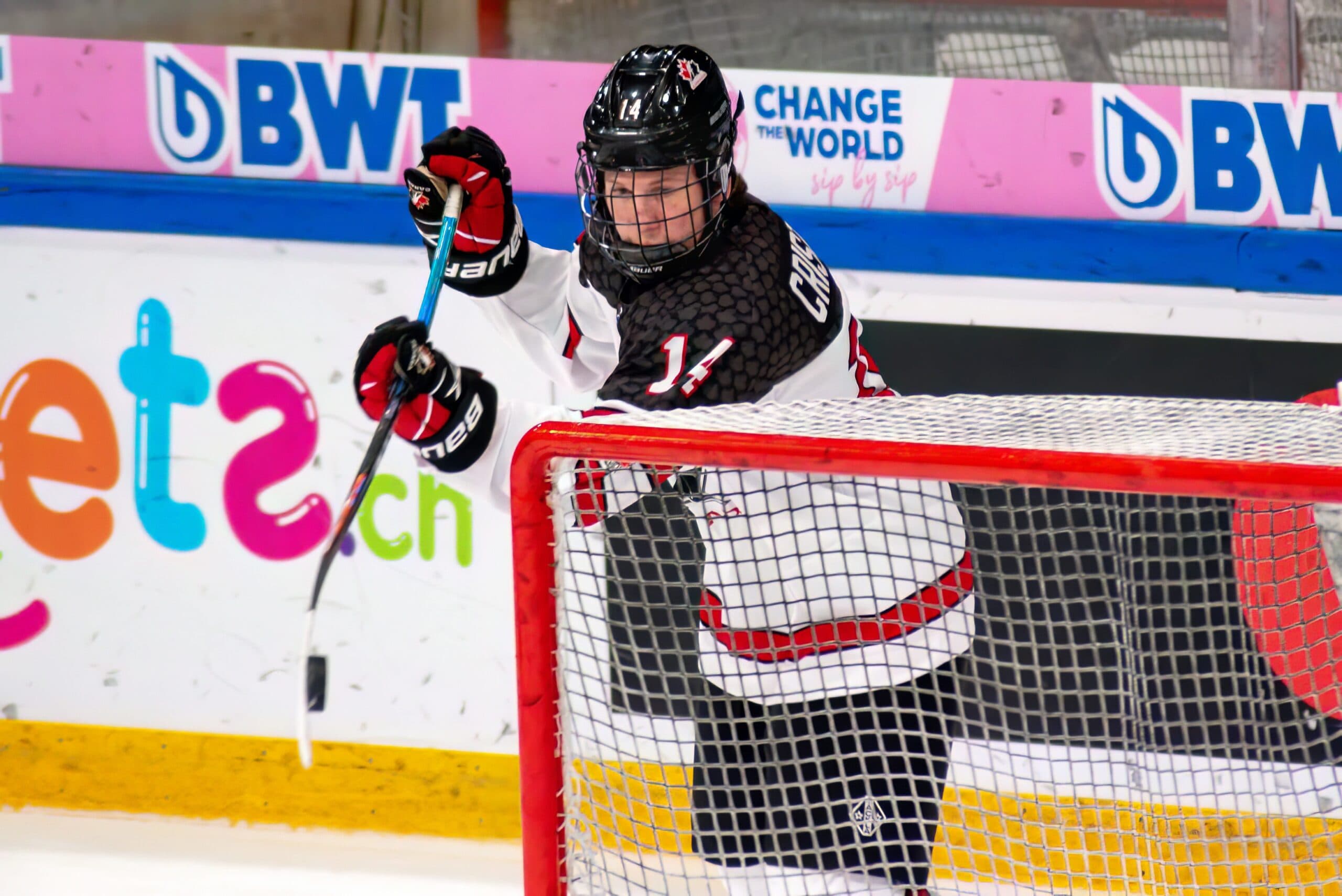
BASEL, Switzerland – Well, that was fun.
The last major event on the 2023 NHL Draft scouting calendar is behind us, with the United States beating Sweden for gold at the U-18 World Hockey Championship in Switzerland. With just under two months to go until the draft, the two-week affair saw some incredible moments from some quality prospects, leading to what turned out to be an interesting championship game.
Many of the game’s top prospects, including Connor Bedard, Adam Fantilli, Leo Carlsson and Zach Benson, were either ineligble to play, still playing domestically or declined the invitation altogether. But that allowed players like Will Smith, Ryan Leonard, Dalibor Dvorsky and Otto Stenberg to shine for their respective teams, and that they did.
I spent the past few weeks documenting the tournament, helping to build my final draft rankings ahead of the selection in Nashville. My most recent rankings were dropped the day before the tournament, and while you can’t make drastic changes based on a seven-game tournament, I do expect some decent movement based on what we saw in Basel and Ajoie.
After watching all the games and looking back at clips, I broke down the games of most of the NHL Draft eligibles who took part. The players that won’t really factor into draft plans weren’t included, and I obviously passed over the 2024 and 2025 talent, which there was plenty of. Norway was also not included because there’s a very good chance not a single player gets picked from their squad, and all their talent is from the 2006 age group, too.
In reality, if you’re reading this, you’re a hardcore, dedicated hockey fan. The tournament has a tough job marketing itself, for a couple reasons. For NHL fans, none of these guys are affiliated with your team. So you might only care about the top names, but you’re not diving deep to find out more about a Slovak second-liner, for example. The men’s World Championship is also closing in, so the teams themselves are often focused on the exhibition games leading up to that.
So, if you’re reading this, you truly care about prospects and the NHL Draft. Kudos.
With that in mind, here’s my look at more than 100 prospects from the 2023 U-18 World Hockey Championship in Switzerland:
Canada
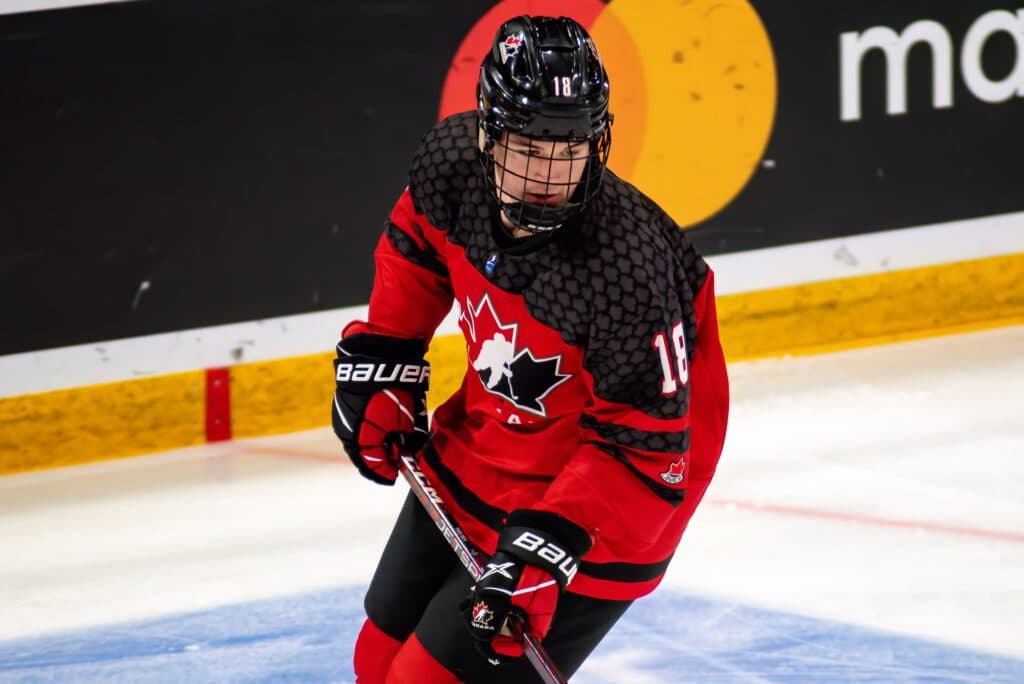
Carson Bjarnason, G (#1): After getting embarrassed in the opening game, Bjarnason helped save Canada’s tournament with some good showings the rest of the way. The Swiss didn’t make it easy in that quarterfinal game, and while the final score was one-sided, Bjarnason is a huge reason why the Swiss didn’t take the lead in the first period of that game. Some think Bjarnason will be the first goaltender taken, and it was nice to see him shake off perhaps the worst outing of his career and turn it into a more successful end. It’s a shame he ended with a concussion.
Lukas Dragicevic, D (#2): Dragicevic was minus-5 in the first game in what can only be described as one of the worst games of his season. But like Bjarnason, he bounced back and looked much better, showing off his high-end offensive reads. His average skating was exposed during the medal round, but the rest of the tournament was fine.
Cameron Allen, D (#11): It truly feels like all the pre-season hype surrounding Allen has fallen completely. He was mistake-prone against Switzerland and looked brutal against Sweden. There were some good moments, like his performance against Slovakia or Germany, but it just looks like a real step down from his more dominant run at the Hlinka. He went from being a potential top 10 prospect to someone I’m not convinced will go early in the second round anymore. He just doesn’t look confident. We’ve seen the highs, and they’re great, so perhaps he ends up being a steal. But this was a rough stretch of games for a player we know has potential.
Tristan Bertucci, D (#24): Compared to his more high-flying play with Flint, Bertucci looked much more reserved while playing more limited minutes. I don’t think he was necessarily bad, but he wasn’t special by any means, either. He’s tracking to be a mobile third-pairing defenseman with some offensive upside.
Quinton Burns, D (#13): Typically, Burns isn’t one I’d want to go 1-on-1 against. In Switzerland, we saw his game’s more defensive, safe side. But an injury took him out after Canada’s third game, which was unfortunate.
Andrew Gibson, D (#6): Gibson started the tournament as the seventh blueliner, but he played more than 20 minutes a night near the end. He didn’t have much to show for on the scoresheet, but he skated circles around some attackers and took risks with some decent rewards.
Étienne Morin, D (#5): Morin showed up for the playoff round and looked a bit jetlagged against Switzerland. He played a decent game against Sweden, but his three-game sample size was just small, regardless.
Caden Price, D (#4): Price’s ice time fluctuated, but he was one of Canada’s better offensive defensemen and did a nice job on the man advantage. Price’s game has come a long way over the past two years, especially in his own zone.
Ty Halaburda, RW (#8): One scout said it best: “He does a ton of things well, but nothing really stands out.” And that’s how I viewed his play. He wasn’t bad, but I didn’t really notice a ton outside of using his speed to beat defenders. Halaburda isn’t that creative, but he gets the job done in a bottom-six role – and that’s perfectly fine.
Colby Barlow, LW (#9): An injury put Barlow on the sidelines for a bit, stunting what had been a good little run for the goal-scorer. He had three points in the final two round-robin games but sat out against Czechia. He returned for the medal round and was named the top player in the semifinal, but you could tell he wasn’t at full strength. Either way, we know he’s one of the better goal-scorers for the draft, so there is nothing to be worried about.
Andrew Cristall, LW (#14): Cristall started in the top six before falling into the 13th forward role against Slovakia. It seemed like he took that personally, scoring twice against Switzerland as he showed off why he’s one of the better scoring threats in the draft. Consistency is an issue, and his work ethic can vary, but he possesses so much high-end skill.
Nick Lardis, RW (#16): Lardis was one of the pillars of the all-skill third line, and I thought he looked decent. He had a hat-trick against Germany and scored against Czechia, but didn’t produce anything else and finished the tournament as the 13th forward. I’m still a big fan after watching his offensive explosion in the second half of the season while with Hamilton.
Riley Heidt, C (#18): Heidt is one of my favorite prospects, so it was disappointing to see him have such a quiet showing. He had just two assists in his first four games and never could get that second line moving. Given he nearly had 100 points with Prince George, he just didn’t look ready to go in Switzerland. I still have high hopes for the future, but something was missing.
Matthew Wood, LW (#26): Wood was one of Canada’s top three players at the end of the tournament, and for good reason. After a year in the NCAA, he looked very mature and physically dominant, giving the team some extra muscle on the top line. He and Celebrini, in particular, looked great together.
Angus MacDonnell, C (#19): I’m not sure what others thought, but I think MacDonnell did a lot to help his draft stock. He had five points, including a pair against Switzerland and a goal against Sweden in the semis. He showed his typical edge, but I wish he got more shots on net. He’s a goal-scorer through and through, but he had just one goal to show for.
Calum Ritchie, RW (#21): Ritchie was one of Canada’s heavy hitters, recording nine points in a four-game window. His four-point effort against Germany was one of the best by any Canadian players, and he helped jumpstart the top line in the game against the Swiss. After a bit of a “disappointing” season by some standards this year, it was good to see him end with a bang.
Alex Pharand, RW (#27): Pharand had a miserable medal round and had just one assist to show for all tournament long despite playing more than 14 minutes most nights. Defensively, though, I thought Pharand shined a bit more.
Czechia
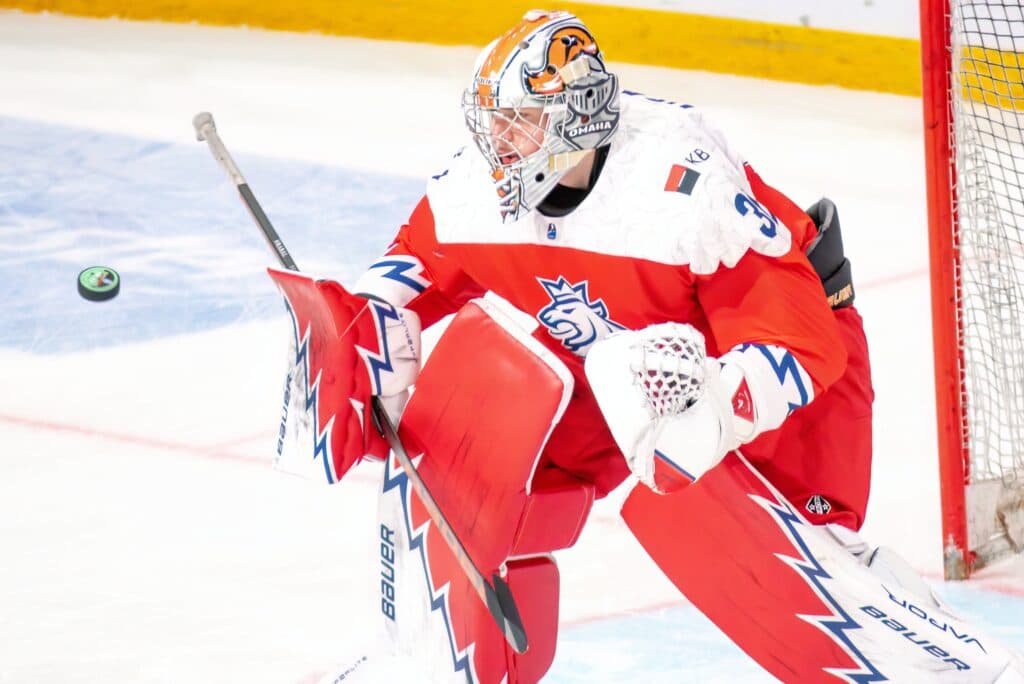
Michael Hrabal, G (#30): Hrabal was one of the better goaltenders, boasting a solid .920 save percentage with a team that landed just one victory. The Czechs were outmatched nearly every night, but Hrabal gave the group a fighting chance, especially against Slovakia, Sweden and the United States.
Jan Kavan, G (#1): Kavan played just 15 minutes against Canada and allowed a goal, but he made a couple of decent saves to stop the bleeding after Hrabal allowed seven. He’s a long-shot to get drafted, but is definitely on the radar.
Jakub Dvorak, D (#20): The Czech captain was one of the few that I was consistently impressed by. After a quiet season playing against men in the top Czech league, he looked energized against his own age group and really stood out positively against the United States. All three of his points came in a dominant effort over the Germans.
Matteo Koci, D (#6): More of a stay-at-home defender, Koci played a reserved game that allowed him to make smart decisions and not push the envelope. He didn’t produce anything on the scoresheet, but I was happy with his overall body of work internationally this season.
Martin Matejicek, D (#19): The Czech coaching staff loved to throw Matejicek on the ice at any chance possible due to his versatility. He’s quick for his big frame, he’s a smart puck distributor and led every Czech player with 21:39 average ice time a game. Matejicek hadn’t been really on my radar this year, but I think there’s something there.
Matyas Adamek, LW (#15): Well, he was on the ice for five seconds against Sweden and never played more than 4:13. So there’s that.
Adam Csabi, LW (#10): I was excited to finally see Csabi in person, someone who I thought may have been an underrated player to watch. He scored in the opener against Slovakia and that was it. Unfortunately, he was part of the problem with Czechia’s offense – it didn’t show up.
Jiri Felcman, C (#22): The big 6-foot-4 forward was the team’s No. 1 center but had just two points to his credit. He was one of the few Czechs that seemed to show up against Canada in the 8-3 loss, but it was an otherwise quiet tournament for the forward playing in Langnau.
Dominik Petr, C (#29): It was good to see Petr back after a serious injury cut his tournament short a year ago. He had a very quiet season in Finland, but he was a star internationally. He had two goals and four points, including the goal that made it a one-goal game against the United States, but it felt like he played well enough to score at least a few others. He’ll get drafted, but likely in the second half.
Eduard Sale, LW (#12): Sale was the key to Czechia’s success. Unfortunately, he got slowed down against Sweden and the United States and wasn’t able to hit his full potential. He can have his ups and downs, but the ups are high enough to consider taking him in the top 15. He just needs to bring high intensity to every game.
Adam Zidlicky, RW (#13): The son of former NHLer Marek Zidlicky, Adam had a very quiet tournament that won’t help his draft stock. After two very average seasons in the OHL, I think he’s destined for a career back home.
Finland
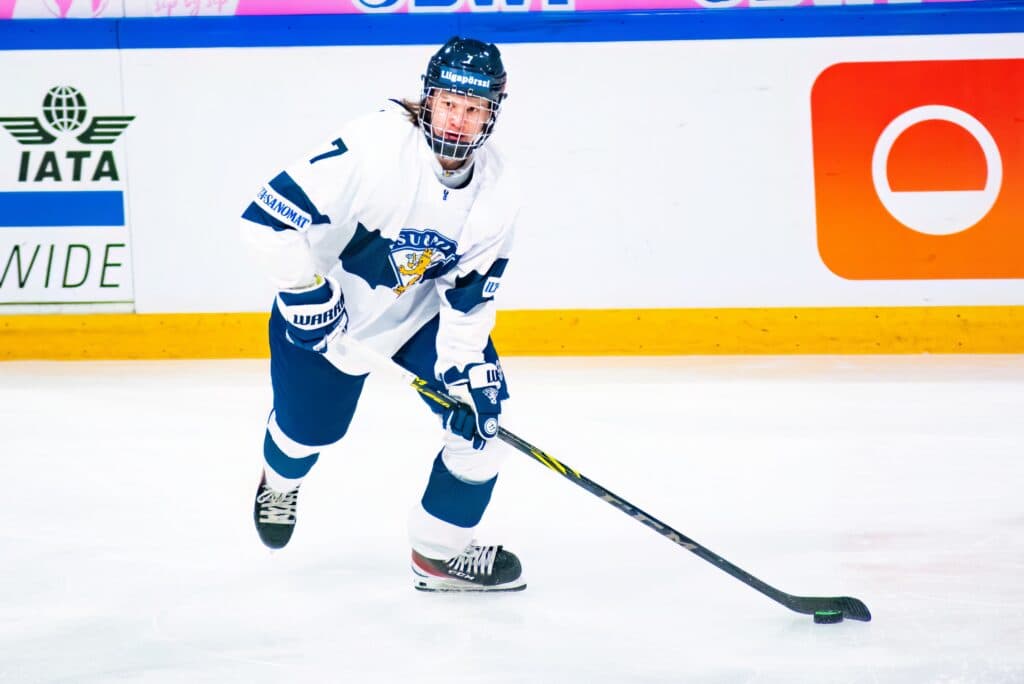
Noa Vali, G (#31): Vali played just one game, a 13-save win over Norway. So it’s hard to actually judge what Vali was capable of this tournament, especially when Eemi Vinni was the goaltender most expected to start anyways. He had a decent year in the Finnish U-20 league but is quite undersized at 6-foot-0. He should be a mid-round pick at best.
Visa Vedenpää, G (#30): The seventh-ranked European goaltender also played just one game, stopping 19 Latvian shots. So, again, tough to get a read on him. But at 6-foot-2, there’s a bit more to work with. Fundamentally, there’s something there, but he’s definitely a project from what I’ve seen this year.
Jimi Junkkari, D (#2): At points, Junkkari’s decision-making was very off. Offensively, like all season long, there was nothing to see. But I still think he did a good job of cutting angles and pushing attackers to the perimeter while playing 20 minutes a night.
Emil Pieniniemi, D (#7): The 31st-ranked European skater wasn’t one I saw a ton of this year, but he’s a decent skater that did a good job of always covering a man in the defensive zone. I don’t think there’s an NHL future here, but he’ll have a decent pro career.
Kalle Kangas, D (#12): Kangas is a big, 6-foot-4 defenseman that, at times, liked to show he meant business. Consistency was an issue this season, but it feels like Kangas could end up being a late-bloomer with some good tools to work with. We’ll see.
Kasper Halttunen, RW (#10): Easily Finland’s most prominent forward prospect, Halttunen’s tremendous shot was on full display. He had one of the hardest recorded shots at just over 148 km/h and even had 15 shots against the Slovaks during the quarterfinal. There are still some consistency issues and he can look like a lost puppy trying to distribute the puck. But as a power forward, Halttunen should be able to build a strong NHL career.
Arttu Alasiurua, LW (#28): Alasiurua’s game is built around speed, and he brought plenty of that to Finland’s second line alongside Halttunen and Konstsa Helenius. He started off as a decent support player but his game trailed off when it started to matter.
Topias Hynninen, C (#15): I think Hynninen started off strong against Switzerland and then played his best game against Norway. There were too many quiet parts, though.
Emil Järventie, LW (#25): Järventie’s Liiga play disappointed me, but it was nice to see him thrive against his age group again. Once a projected top-60 prospect, I think he’s fallen to the third or fourth round, but he has room to grow with some good offensive instincts.
Jesse Kiiskinen, RW (#23): Kiiskinen was one of my favorites. He was a big part of the Finnish attack and was one of the more involved forwards, offensively. He got shut down despite a good quarterfinal game, but he did a lot of the heavy lifting for the Finns. I loved Kiiskinen’s play internationally this season and I think he has a solid future ahead.
Rasmus Kumpulainen, C (#18): I thought Kumpulainen looked good as the Finns’ No. 1 center. He had a pair of multi-point games, highlighted by two goals and nine shots in the first game. He was all over the ice in that loss to Slovakia, too. I liked what I saw.
Emil Kuusla, LW (#35): The small winger impressed me right out of the gate with good showings against USA and Norway, even if he had just a single assist to show for. He was a depth forward that brought energy, speed and skill. It’ll be interesting to see if he gets drafted.
Tom Leppä, C (#19): For someone averaging just 11:46 a game, he was efficient with two goals and three points in five games. I didn’t see someone who could be a real impact offensive threat, but he plays a decent two-way game.
Jesse Nurmi, LW (#22): I was surprised when I had a pair of scouts say they think Nurmi could be a first-round pick heading into the tournament. He ended up with a point-per-game in arguably his best stretch of hockey with the Finnish national team. I’m still thinking late second round at the earliest, but he packs a ton of skill and speed into a midsized frame.
Tuomas Uronen, RW (#29): Uronen was a rocket in that game against the Latvians, but then he was snakebitten the rest of the way. It felt like he played better than his stats suggest.
Germany
Leon Willerscheid, G (#30): It wasn’t an easy tournament for Willerscheid, Germany’s starting goalie that was outmatched every single game. He made 42 saves against Canada and was good in the first half against Slovakia before everything fell apart. Willerscheid likely won’t get drafted, but he’s set to play in the DEL next year – maybe he can boost his stock as a second-year draft-eligible prospect.
Nico Pertuch, G (#1): Pertuch’s one start almost saw him lead Germany to a shocking win over Sweden. He’s a battler, that’s for sure. He didn’t play much this year, and doesn’t have much international experience, so there’s not much to go off of here.
Norwin Panoch, D (#6): Panocha was Germany’s best defenseman in this tournament, one that remained grounded even during the onslaughts that ensued. He played in all situations and showed he could keep up with the pace.
Kevin Bicker, LW (#14): Bicker isn’t highly rated, but I think there might be something there. He’s quick, strong and loves spending time in front of the net. He scored just twice in the round-robin but it felt like he was still one of Germany’s best players every single game, just like during the Hlinka Gretzky Cup. If a team picks him up, he might be an interesting project.
Linus Brandl, C (#23): Brandl was at his best against Norway in the opening relegation-round game but was left off the scoresheet. A strong year in the German U-20 league, plus a good showing at the Hlinka-Gretzky Cup, helped raise Brandl’s profile this year.
Latvia
Aksels Ozols, G (#1): I might have been the only one that really saw anything in Ozols, and that’s OK. Between this and the World Junior A Challenge, I thought he had a handful of solid starts that were overshadowed by blowout losses. He’s an athletic battler that gave it his all every game, with his 49-save run against Sweden being his best showing.
Peteris Bulans, D (#16): Bulans was perhaps the only defender that made me take notice every single night. He had a trio of assists, played more than 21 minutes a night every single game and played all situations. His season was short, but I was impressed with the quality overall. I think he’ll get taken late in the draft.
Slovakia
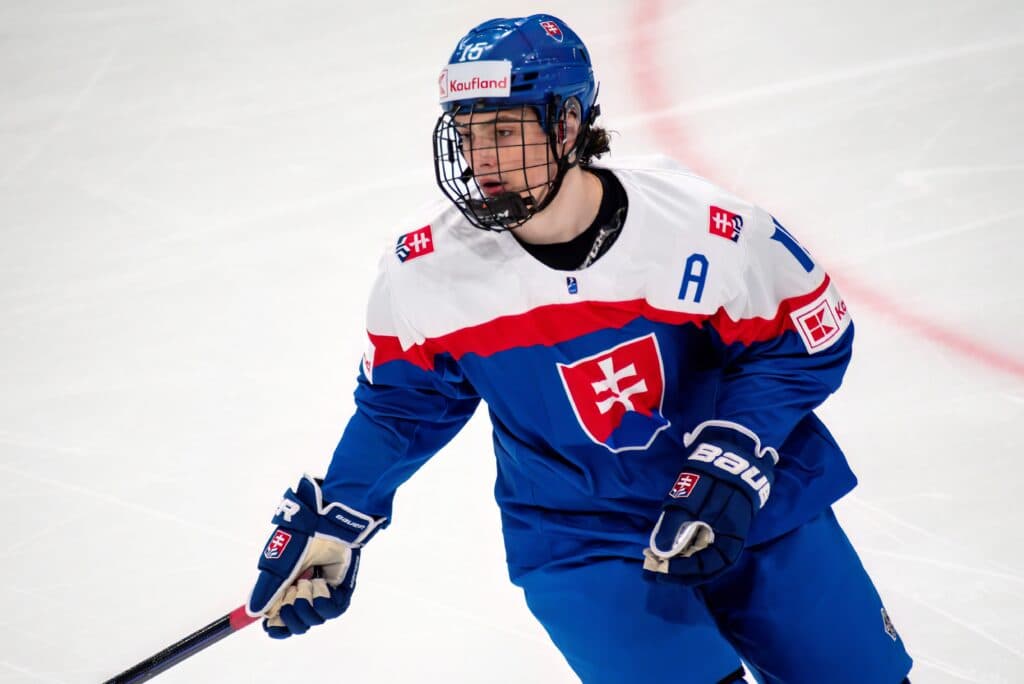
Samuel Urban, G (#31): After some decent performances at the Hlinka Gretzky Cup, Urban looked to build upon that with a strong tournament to end the season. He led Slovakia to a shootout win in the opener against Czechia, then made 47 saves to keep his team in it against Sweden the following day. He capped off the round-robin with 23 saves against Germany, a game that saw the Slovaks trail for most of it. Given his so-so season with mixed results against Slovakia and the United States, it was nice to see him end strongly. There’s potential for him to be taken late this year.
Lukas Fursten, G (#2): Fursten nearly stole the win for Slovakia against Canada, stopping 38 saves in his tournament debut. His numbers were good in the Slovak U-20 league, but it probably wasn’t enough for him to earn any real NHL Draft consideration – that, and he’s 5-foot-10. Scouts definitely noticed, though.
Milan Pisoja, D (#3): Standing tall at 6-foot-3, I liked Pisoja’s physicality and own-zone coverage. Not sure he’s more than a big body at any higher level, though.
Maxim Strbak, D (#4): After two impressive world junior tournaments, Strbak kept the fun flowing with an excellent, minute-munching tournament. He’s projected to go in the second round. I know a few scouts are learning towards him being earlier in the round than later. He’s always moving, keeping his head up and may have been Slovakia’s best skater outside of Dvorsky. Strbak averaged just under 26 minutes a night to lead all players. His footspeed hinders him, though.
Leo Eperjesi, D (#9): Eperjesi is best when you don’t really notice him. He typically plays with an edge, but I can’t say I saw that in spades this time around. Another big body stay-at-home defender.
Samuel Barcik, D (#23): Barcik plays a decent defense-first game with no real offensive upside. His decision-making with the puck needs work, but he hits hard, typically holds his positioning well and is a decent enough skater.
Dalibor Dvorsky, C (#15): Easily one of the best players in the tournament. His five-point effort against the Germans saved Slovakia’s tournament. He was only held off the scoresheet in the opening game against Czechia. But even then, he was one of the more noticeable players. Against his own age group, Dvorsky has always thrived, and this may have been his best performance yet.
Juraj Pekarcik, LW (#18): The 6-foot-2 forward crept into my consciousness late in the season, and this was the best hockey I’ve seen him play after struggling against men in the top Slovak league. He scored seven points in the round-robin while playing for over 20 minutes a night. He’s an excellent setup man who had some luck putting pucks in the net, too.
Frantisek Dej, C (#22): His decision-making is questionable at best. But Dej isn’t about the offense – he’s a defensive forward with good size. There’s room for players like that in an NHL team’s system, but the ceiling isn’t that high.
Peter Cisar, RW (#28): A strong skater, Cisar was one of the better players against Canada and had some close chances against Germany. There’s a slight chance he’s taken quite late, but his lack of offense this year didn’t help.
Daniel Jencko, RW (#17): With the U-18 team, I’ve liked what I’ve seen from Jencko this year. He’s really hot or cold, and we’ve seen this at this event, but he’s been one of Slovakia’s more notable forwards.
Adam Cedzo, RW (#24): After an excellent season in the Czech U-20 league, Cedzo is finishing things off with his best stretch of hockey of the season. Had scored twice in regulation and again in the shootout to lead the Slovaks to a surprise win over Czechia and snagged points against Sweden and Germany. His chemistry with Dvorsky was quite something.
Roman Kukumberg, LW (#16): Kukumberg plays a versatile game, with no real standout qualities but the ability to provide a lot of value. He battles hard, was good defensively and created some scoring chances along the way. He was easily one of the most noticeable forwards on Slovakia and should get some attention on draft day.
Sweden

Noah Erliden, G (#1): Erliden outdueled every goalie he faced, and it ended up with a pair of shutouts and just one 5-on-5 goal against heading into the final round. All of my viewings of Erliden with the Swedish national junior team has been excellent. He’s 5-foot-11, and definitely looks small in the Swedish net. Just think, if he was a little bit bigger…
Axel Landen, D (#3): Landen is strong defensively and physically, and his work ethic was as good as anyone on the Swedish blueline. He didn’t record a point, but as a raw defensive-minded blueliner, there’s enough to like here.
Axel Sandin Pellikka, D (#4): One of the best defensemen available for 2023, ASP lived up to the hype. He was one of two defensemen to hit double digits in the tournament, recording five points in the opening game and playing over 20 minutes every single night. Sandin Pellikka will be a decent top-four defenseman in the NHL, no question.
Tom Willander, D (#5): Willander was ejected for jabbing Matt Wood in the gonads in the semifinal. Otherwise, he was the typical high-risk, high-reward defender we’ve all become accustomed to. He’s a treat to watch when skating down the ice with the puck. He’ll frustrate whatever fanbase ends up selecting him, but they’ll fall in love with him at the same time when the results go in his favor.
Axel Hurtig, D (#6): Hurtig played a ton of minutes with Tom Willander, acting as more of the stay-at-home, defensively responsible partner for Tom Willander. Nothing flashy, just safe, good fun. I don’t think he has much of an NHL future, though.
Albert Wikman, D (#7): Wikman was injured during the game against Slovakia and didn’t return. After playing limited minutes in the SHL prior to the tournament, I was hoping we’d see solid games out of Wikman. What a shame.
Arvid Bergström, D (#8): Bergström was excellent as a two-way threat in my viewings. He finished strong with points against Canada, Latvia and Germany, although he didn’t play a ton in any game. But I can’t recall seeing him make many mistakes, either.
Theo Lindstein, D (#9): You never really know what you’re getting with Lindstein. He was great offensively in the first two games and then failed to get back on the scoresheet. Sometimes, he looks so confident shooting the puck, highlighted by his seven-shot game against Slovakia. Other times, it looks like he’s afraid to rush the disk.
Noah Dower Nilsson, LW (#12): This was one of the more impactful stretches of games for Dower Nilsson, who had to play a bit of catch-up after suffering an injury at the World Junior A Challenge this year. While the top Swedish line did most of the damage, Dower Nilsson was very effective during the playoff round. When watching Dower Nilsson, you’re looking for his puckhandling skills, which looked as good as ever. Just wish he’d play less on the perimeter.
David Edstrom, C (#15): The big power forward had an exceptional tournament, highlighted by a three-point performance against Canada and points in nearly every game. He was always near the top of the shooting charts for the Swedes while anchoring that explosive top line.
Zeb Forsfjall, C (#17): Forsfjall had his quiet moments, but his responsible two-way play was on display every night, even when held off the scoresheet. He’s a good complementary piece that has consistently shown up internationally. I can see him being a third or fourth-round pick with some high upside thanks to his raw skill set.
Noel Nordh, LW (#26): Nordh likes to play on the edge, resulting in him getting ejected from the semifinal. The big-bodied forward still had a decent tournament, recording four points and landing some sizeable hits along the way. Nothing too special, but there’s some good nuance in the way he thinks the game and creates opportunities.
Hugo Pettersson, LW (#19): It was a very quiet tournament for Pettersson, who didn’t break the 10-minute barrier after the opening game. He was just the odd man out it seems.
James Sagadin, LW (#25): He had nothing to show for on the scoresheet, but I liked his energy. He played every shift like he had something to prove. Unfortunately, that was just a few times a game.
Otto Stenberg, LW (#23): Stenberg was one of the standouts of the tournament, setting the record for most points by a Swedish player in tournament history. He was creative, made smart passes and his release was as good as we’ve seen it this year. For some reason, he takes his game up to another level internationally.
Felix Unger Sörum, RW (#18): Unger Sörum was a setup machine on that top line, and easily one of the biggest draft risers. A pair of scouts I talked to think he could go late in the second. I don’t agree, but there’s some raw talent with no huge deficiencies here.
Anton Wahlberg, RW (#22): Never afraid to throw his weight around, Wahlberg started strong with four points in the first two games before fading a bit. He has an excellent shot but just had a tough time generating much. Defensively, he’s stout, and his compete level was as high as anyone on the Swedish team. As a power forward, there’s a ton of value here.
Switzerland
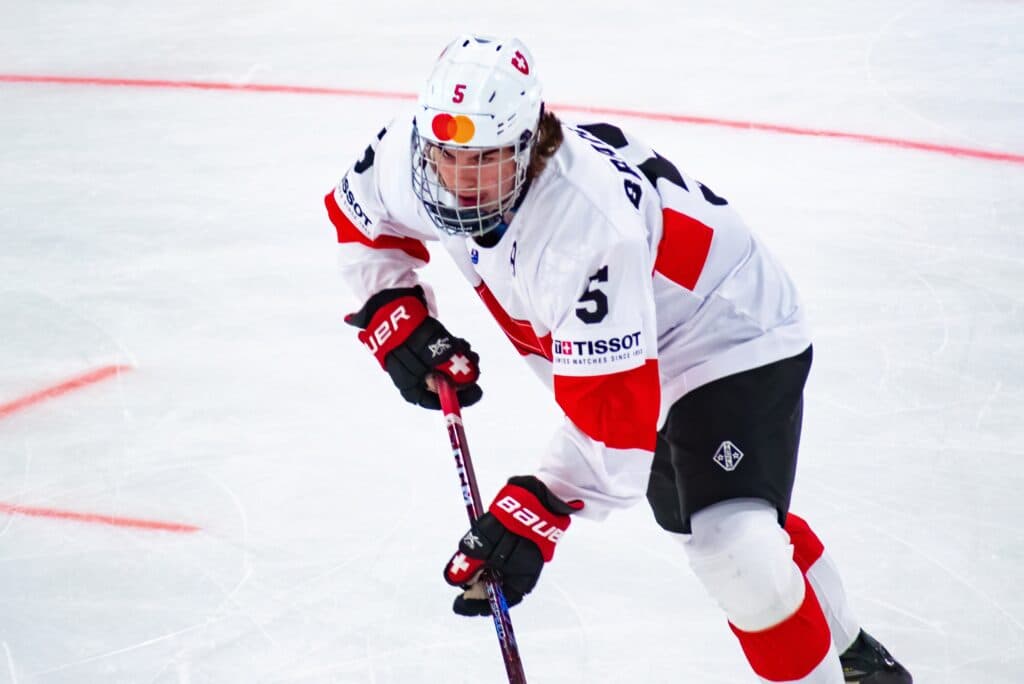
Ewan Huet, G (#29): Huet started his draft year as Switzerland’s backup at the Hlinka-Gretzky Cup. But after a solid season, the son of former NHLer Cristobal Huet took full control of the No. 1 spot, winning twice in the round-robin and putting up good performances against Canada and Finland. It’s unlikely he’ll get drafted this year, but he’s expected to go to the CHL next year, giving scouts a better look.
Eric Schneller, D (#26): Schneller’s name was mentioned a lot by Swiss scouts and media. I’m not sure I’m sold on his future as a potential NHLer, but Schneller had his moments and was quite involved offensively. Defensively in his own zone, there were some concerns. But the good news? He’s part of a strong Rogle system in Sweden, so maybe that’ll spark some interest.
Timo Bunzli, D (#7): A two-way defenseman, I remember quite a bit of interest in him when he thrust onto the scene at the U-16 level. It feels like he hasn’t taken many steps offensively, but defensively, he’s not getting flat-footed all the time anymore.
Thibault Martin, D (#3): A physical, defensive defenseman, that’s exactly what he was in Basel. He’s one of the most feared defenders in Switzerland in this age group from a physical standpoint but doesn’t produce a ton of points.
Leo Braillard, LW (#5): Braillard was very low on my radar before the tournament, but his energetic play style, mixed with his strong wrister, made him a must-watch prospect for me. If he’s drafted, it’s going to be late. But it was great to see him play some of his best hockey this year on home ice.
Alain Graf, C (#24): I liked Graf’s play against Finland, and he had some good chances against Norway. But after that, even when he got an assist against Latvia, he looked nearly invisible.
Rico Gredig, C (#8): While Gredig wasn’t a big play driver, he seemed actively engaged, especially in the big 5-0 win over Norway. His ice time kept improving throughout the tournament for a reason. I don’t think he’ll get drafted, but I’m a little intrigued.
Simon Meier, C (#27): The small center can absolutely fly around the ice. While the U-18s weren’t the best showing for him, I’ve seen some impressive hockey out of Meier the past two seasons. Enough so where I wouldn’t be surprised if a team takes a flier on him at the end of the draft.
Matteo Wagner, LW (#20): After a very unspectacular year in Finland, Wagner has been one of Switzerland’s more consistent point producers despite never playing more than 13 minutes a night. He’s listed at 5-foot-6, but he can definitely fly and has a great shot.
Lenn Zehnder, LW (#12): I was slightly disappointed because I’ve seen Zehnder become more impactful. His ice time has been limited and he hasn’t had much to show for. He worked his butt off, though.
USA
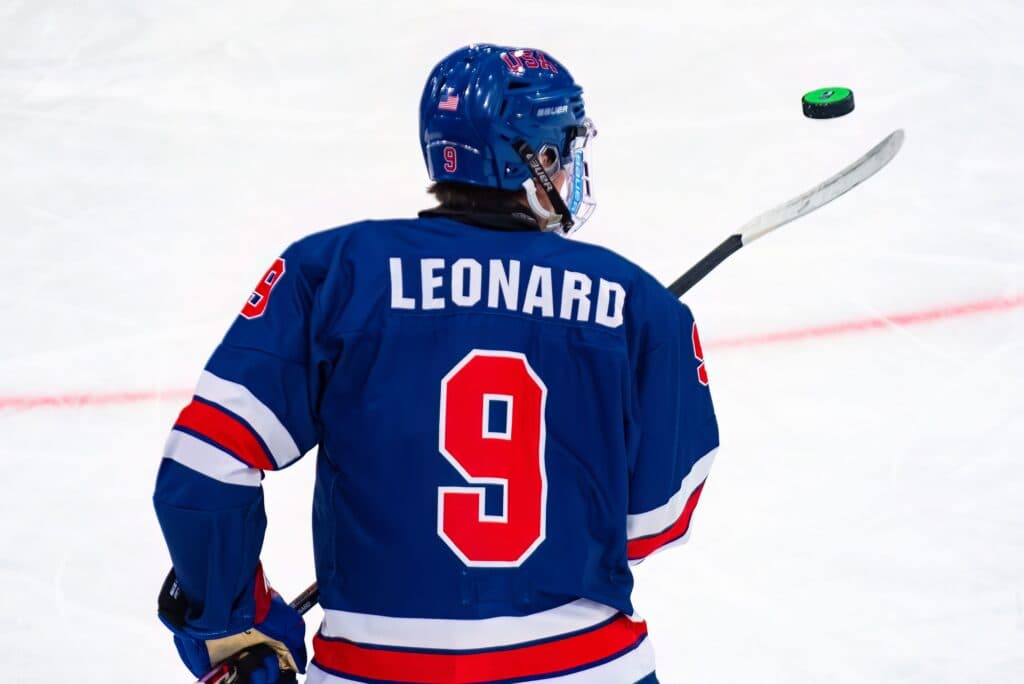
Trey Augustine, G (#1): Augustine rarely needed to be anything special for the Americans, but he got the job done as usual. He’s one of the best goaltenders in the draft for a reason – he’s athletic, reactive and doesn’t get burned by his smaller size. Augustine could end up going in the second round, and this tournament didn’t really matter in the grand scheme of things for his status.
Carsen Musser, G (#32): Musser wasn’t very busy, stopping 18 of the 19 shots he faced over five periods. But, hey, he did exactly what was needed. The Colorado College commit has excellent size and likely will be drafted, but he’s a long-term project.
Drew Fortescue, D (#24): At long last, he finally scored his first goal of the season in a blowout win over Switzerland. From an offensive standpoint, he seemed much more involved than usual. Defensively, he was one of the better players for the Americans. I didn’t think too highly of him during the regular season, but my interest was peaked in Basel. He might be one of the bigger draft risers out of this tournament.
Aram Minnetian, D (#17): Minnetian has been my favorite defenseman all season long. He’s got a good baseline in shooting, skating, puckhandling and decision-making. Minnetian is not spectacular in anything specific, but he was a grounded piece of the non-stop American attack. He can make life a bit miserable in front of the net, and his confidence seemed to only improve as the season went on.
Brady Cleveland, D (#6): Teams like big, physical defensemen. While he didn’t do anything special in Switzerland, he had more than 100 penalty minutes this season and made himself difficult to play against over the past two weeks. Essentially, the usual.
Paul Fischer, D (#7): Fischer plays a simple game, and that was on full display again in Basel. The six-foot blueliner is best at being in the right position at the right time, but he has some decent offensive potential. He’s going to be a mid-pack pick, someone that might work as a depth option one day.
Zach Schultz, D (#8): Schultz is a captain for a reason: he never puts his team in a bad spot and is smart and composed. Technically, he has a lot going for him, but nothing that makes him a real standout, either. He’s best when he’s in the background or paired with an offensive defneder.
Will Smith, C (#2): It felt like the Will Smith show from Day 1. His creativity was unmatched, which led to him scoring a tournament-high 20 points en route to being named MVP. Many scouts I talked to wondered if he’ll go No. 5. I still think Zach Benson has a bit more high-end potential, but if Smith falls to sixth, that team is getting a future No. 1 center.
Carey Terrance, LW (#3): Terrance was a nice addition to the team’s top six, scoring in every game during the round-robin while playing around 15 minutes a night. Terrance was a dominant scorer with Erie this year but was more of a support player here. In this case, that was nice to see.
Gabriel Perreault, RW (#4): It’s funny, because even though Perreault set a new record for most points in a single season by a player on the United States National Team Development Program, it felt like he was the third best player on his own line. And that’s not a knock at all – arguably, that would make him the fourth-best player. Few players were as fun to watch around the net as Perreault.
Ryan Leonard, RW (#9): Leonard does a bit of everything, including scoring at will. He finished third in tournament scoring with 17 points, it was the things he did away from the puck – the hits, the defensive play – that allows him to stand out away from his teammates. Leonard had a very strong case to win the MVP award, but, alas.
Ryan Fine, LW (#10): Fine doesn’t get enough credit on a loaded American squad. He’s so athletic, and seems to have a never-ending motor. A lot of contributions on the ice don’t involve the scoresheet, but if there’s anyone I’d want on my line to land a hit to help generate a scoring play in the offensive zone, it’s him.
Oliver Moore, C (#11): It’s funny because Moore’s tournament felt much quieter compared to the big three. But he still got points in every game while carrying the load on USA’s second line. It didn’t really matter what he did – Moore is a projected top 10 pick for his incredible hockey IQ and top speed. He’s a special player.
Danny Nelson, LW (#13): I love how willing he his to lay his body on the line to block shots. He also has quite the howitzer, registering one of the hardest shots in every game he played. There wasn’t much to see offensively, but he plays a strong defensive game. There’s room for guys like him on any NHL team.
Beckett Hendrickson, LW (#18): Just watching Hendrickson, it feels like we should see much more from him. He has a powerful shot, but rarely uses it. He can skate quick, but only in bursts and he never seems to use it to his advantage. He’s mainly a defensive forward at this point and has a long path to the NHL, if he even gets picked.
Carter Slaggert, LW (#19): The latest Slaggert brother on the market, I don’t think Carter gets drafted. There are signs of good decision-making and skill, but he’s mostly an energy guy who doesn’t play a ton or generate much when he’s on the ice. He’ll be a decent AHLer.
Will Vote, RW (#22): I feel like Vote won’t have much of an NHL career. But as a complementary forward alongside two elite talents in Cole Eiserman and James Hagens, Vote made some smart plays at both ends on a nightly basis. He’s off to Boston College next season alongside the entire top line on USA – a team that could do some serious damage. But will Vote be a big contributor? I’m not sure yet.
Salvatore Guzzo, RW (#23): From a skills standpoint, Guzzo has quite a bit to work with. He’s a decent skater, can block shots and has a nice release. Guzzo played his best hockey in the medal round, looking more confident with the puck. He also fought like his life depended on it in along the boards.
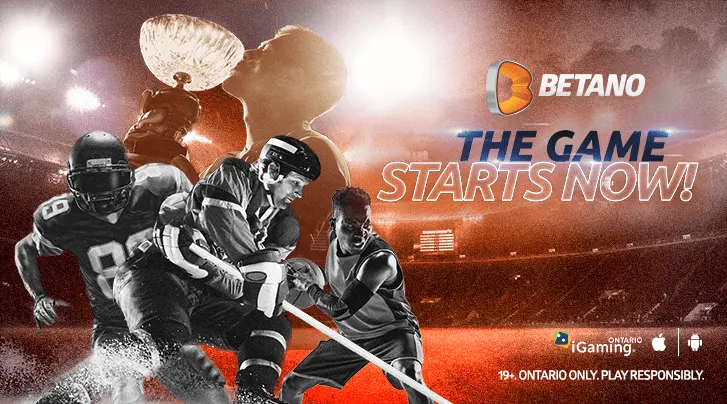
Discover Betano.ca – a premium Sports Betting and Online Casino experience. Offering numerous unique and dynamic betting options along with diverse digital and live casino games, Betano is where The Game Starts Now. 19+. Please play responsibly.
Recently by Steven Ellis
- 2023 NHL Draft prospect Kasper Halttunen isn’t afraid of anyone
- Can Michael Hrabal become the best goaltender from the 2023 NHL Draft?
- Meet Cole Eiserman, the 2024 NHL Draft’s scoring superstar drawing comparisons to Matthews, Ovechkin
- Lukas Dragicevic is a high-risk, high-reward prospect for the 2023 NHL Draft
- Meet Gabe Perreault, the NHL Draft prospect that broke Auston Matthews’ scoring record
- NHL Draft Rankings: Connor Bedard leads pre-draft lottery top 75
- U-18 World Championship Scouting Notebook: The top standouts from Day 1
- U-18 World Championship scouting notebook: The top standouts from Day 2
- U-18 World Championship Scouting Notebook: The top standouts from Day 3
- U-18 World Championship Scouting Notebook: The top standouts on Day 4
- U-18 World Championship Scouting Notebook: The top standouts on Day 5
- U-18 World Championship Scouting Notebook: The top standouts on final day of round-robin
- U-18 World Championship Scouting Notebook: The top standouts from the quarterfinals
- U-18 World Championship Scouting Notebook: The top standouts from the semifinals
- Ewan Huet is looking to follow in his father’s footsteps – while still paving his own path
- Cole Hutson is already standing out for the 2024 NHL Draft
More from Steven Ellis
- Penguins’ goaltending depth has an opportunity to flourish following Tristan Jarry trade
- 2026 World Juniors Preview: Germany just hopes to stick around
- USHL’s Madison Capitols to host “Birds Aren’t Real” night, rebrand to Surveillance Swans
- Former NHL coach Michel Therrien to lead Canada’s 2025 Spengler Cup team
- Pete DeBoer not ruling out NHL coaching job if made available before Olympics